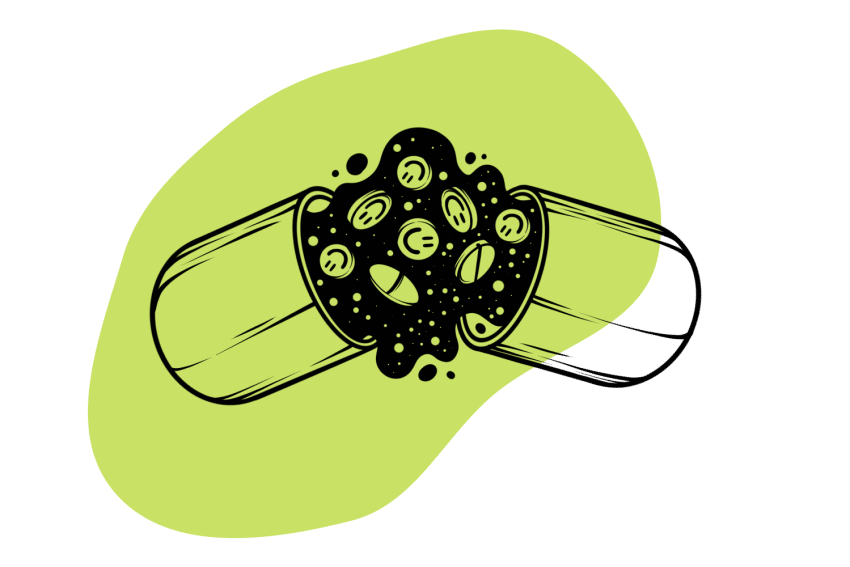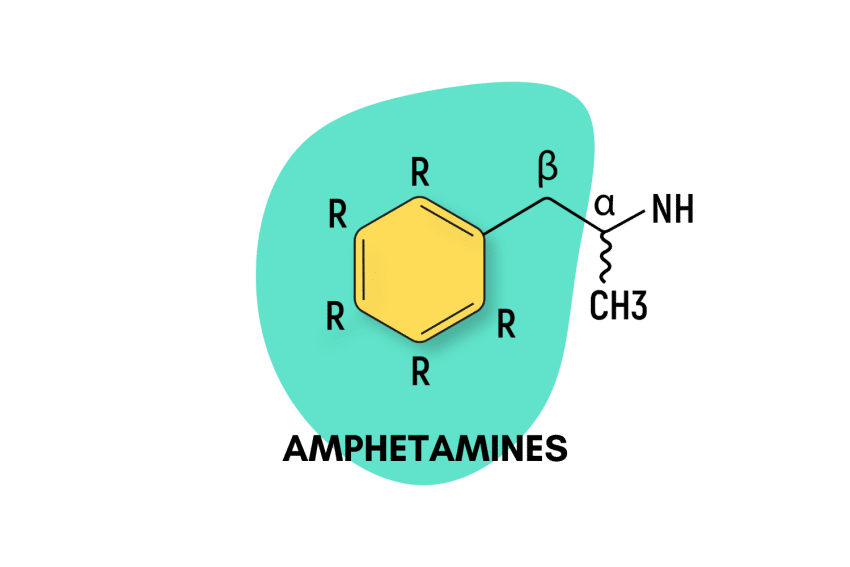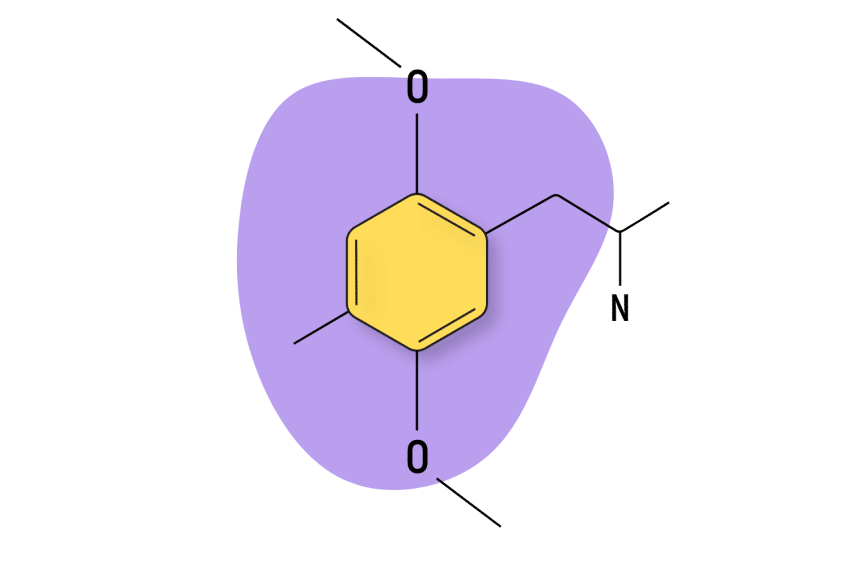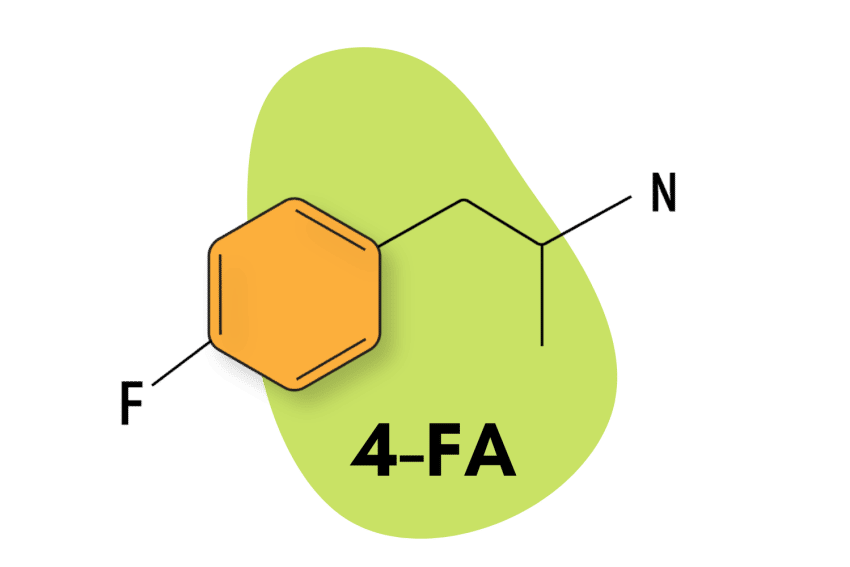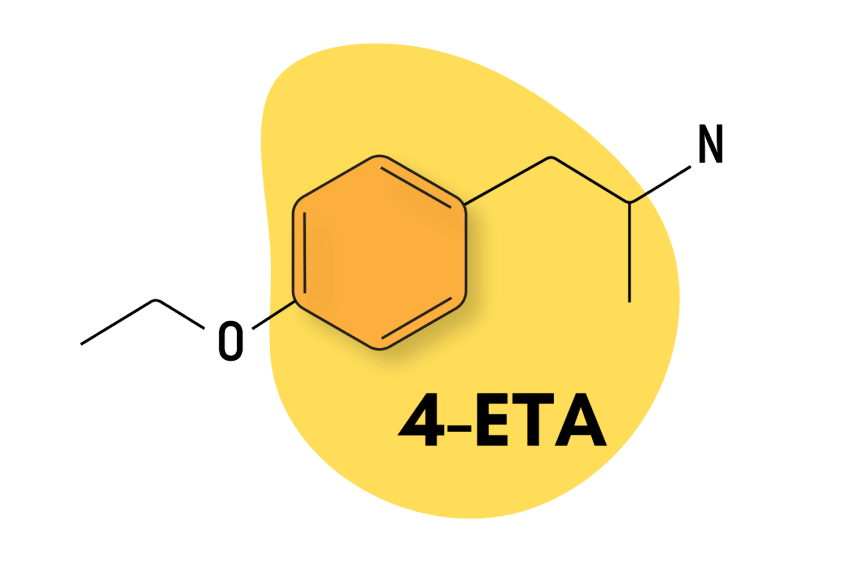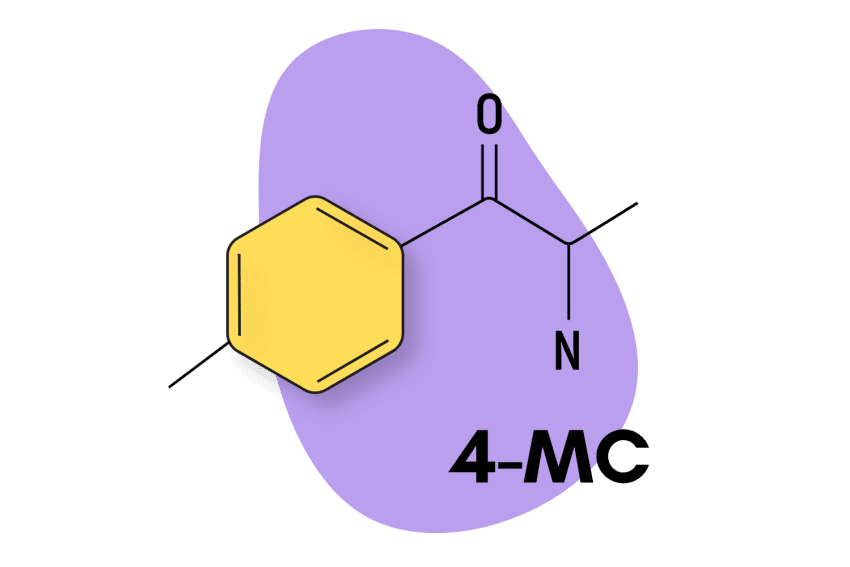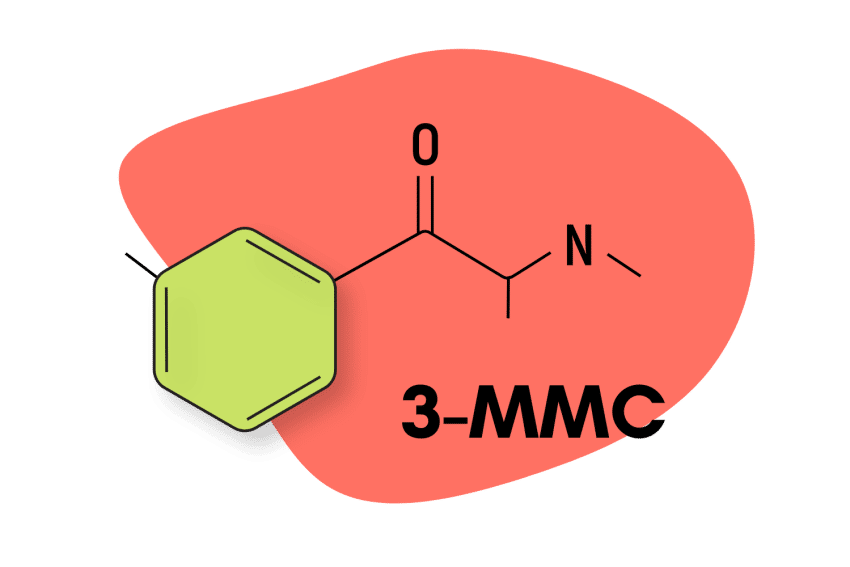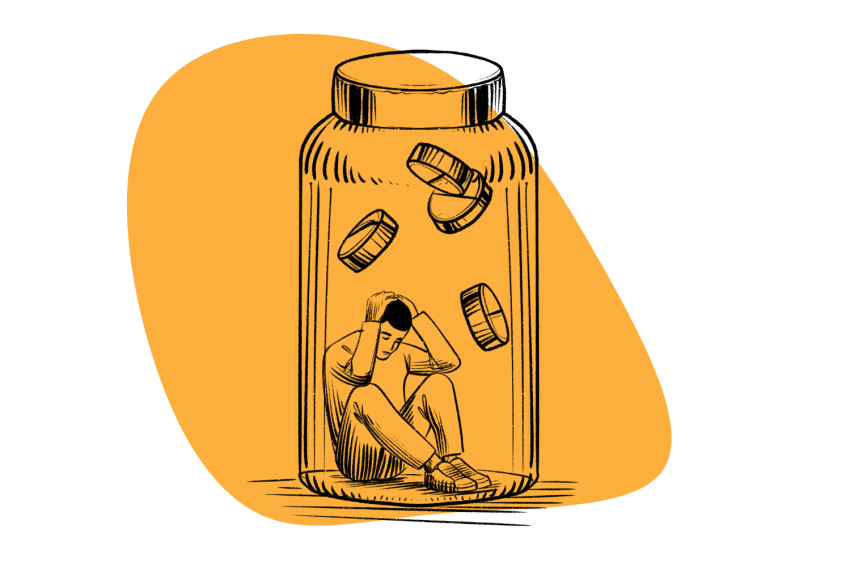Exhaustive List of Adderall Interactions
Adderall (amphetamine/dextroamphetamine) interacts with over 180 different drugs we know of so far. Understanding the way it affects other substances is a crucial component of using this drug safely.
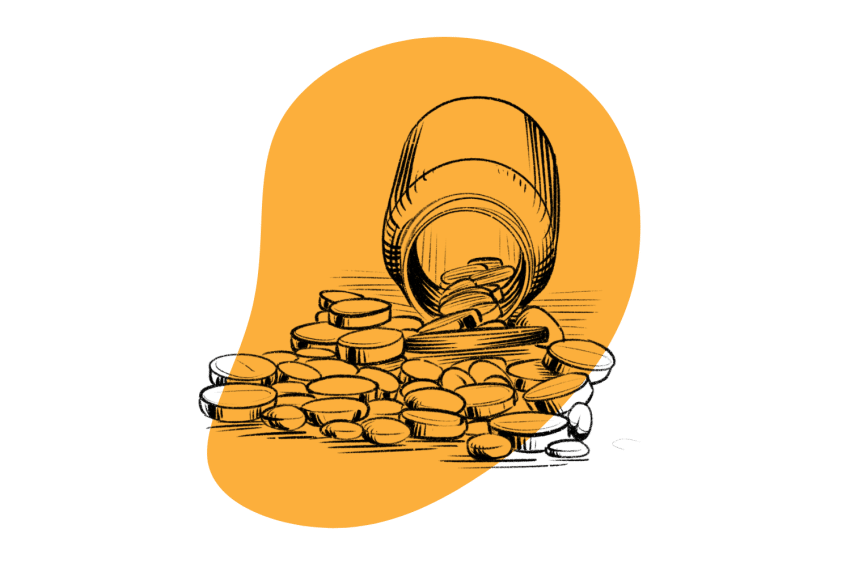
It’s not uncommon for people to not tell their physician the whole truth when it comes to their drug use. Truthfully, the anti-drug consequences spill over greatly into the expected confidentiality of a meeting with a psychiatrist.
ADD and ADHD are particularly difficult since the government heavily controls the drug used to treat them — amphetamine. As a result, many people self-diagnose and go through the process of getting a prescription without giving the full truth.
Additionally, it’s common for a psychiatrist or other professional testing for ADHD to do so rapidly and without much concern for the patient. Mixing Adderall with other drugs without understanding the effects of what you’re looking at can be unpleasant or even deadly.
181 drugs interact with Adderall (amphetamine/dextroamphetamine) we currently know of. It’s important to educate yourself on everything you’re taking and inform your psychiatrist of any other medications.
Below, you’ll find a chart of most of the important interactions with Adderall, which we will get into with more detail below.
Adderall Drug Interactions Chart
| Drug Type | Drug Examples | Interaction | Level of Risk |
| Marijuana | – | Marijuana can elevate heart rate along with amphetamines, but otherwise, the two can complement each other, canceling out some adverse effects. | Low |
| Classic Psychedelics | • Magic Mushrooms • LSD • Mescaline • DMT | Psychedelics are energizing on their own, so combining them with amphetamines can increase the chance of irritability and elevated heart rate while tripping. Since both drugs affect serotonin, there is also a low chance of serotonin syndrome with this combination. | Moderate |
| Psychedelic Amphetamines | •MDMA • MDA • Cathinones • DOX Compounds | Since these drugs have an amphetamine component to them, taking them concurrently with Adderall can lead to a stimulant overdose. Psychedelic amphetamines’ mechanism of action — rapidly increasing serotonin production — carries a much higher risk for serotonin syndrome than other psychedelics. | High |
| Caffeine | •Coffee • Tea • Energy Drinks | Since both increase energy, combining them increases the chances of jittery feelings, overstimulation, and elevated heart rate/blood pressure. | Moderate |
| Ethanol | • Beer • Wine • Liquor | Adderall increases tolerance to alcohol which can lead to overconsumption and heavy intoxication when it wears off. Mixing these may also lead to mood swings and increased irritability, along with blacking out or alcohol poisoning after the effects of the amphetamine die off. | Moderate |
| Other Amphetamines | • Methamphetamine • Cocaine • Concerta •Desedrine • Focaline • Metadate • Ritalin | Concurrent use of stimulant drugs, such as other amphetamines, can lead to a high risk of overdose or long-term cardiovascular/neurological complications. | High |
| Monoamine Oxidase Inhibitors (MAOIs) | • Marplan • Zyvox • PrrovayBlue • Nardil • Emsam • Zelpar • Parnate | Perhaps the most dangerous drug to mix with Adderall, MAOIs potentiate Adderall, slow the breakdown of serotonin, and inhibit the enzyme responsible for controlling blood pressure. This combination m may lead to heart attacks, high blood pressure, or stroke, as well as serotonin syndrome. | Very High |
| Tricyclic Antidepressants (TCAs) | • Silenor • Desipramine • Norpramin • Amitriptyline • Pamelor | Adderall makes these take longer to metabolize, running the risk of serotonin syndrome. TCAs can also potentiate amphetamines. | High |
| Selective Serotonin Reuptake Inhibitors (SSRIs) | • Prozac • Zoloft • Celexa • Paxil | Adderall makes these take longer to metabolize, running the risk of serotonin syndrome. | High |
| Serotonin Noradrenaline Reuptake Inhibitors (SNRIs) | • Cymbalta • Effexor • Pristiq | Adderall makes these take longer to metabolize, running the risk of serotonin syndrome. | High |
| Lithium | – | Lithium blunts the effect of Adderall, potentially even in inactive doses. Combining the two also may lead to serotonin syndrome. | Moderate |
| Cytochrome p450 2D6 (CYP2D6) Inhibitors | • Prozac • Prexeva • Norvir Paxil • Brisdelle | Adderall makes these take longer to metabolize, running the risk of serotonin syndrome. The point of these drugs is often to extend the amount of time other serotonergic drugs stay in your system, so this combination has a high likelihood of leading to serotonin syndrome. | Very High |
| Antacids | • TUMS • Alka-Seltzer • Rolaids | Increases the effects of Amphetamines, which could lead to increased side-effects | Low |
| H2 Blockers | • Zantac • Tagamet HB • Pepcid AC • Axid | Increases the effects of Amphetamines, which could lead to increased side-effects | Moderate |
| Urinary Alkanizers | • Acetazolamide | Decreases the urinary excretion of amphetamines, lengthening the amount of time it stays active | Moderate |
| Proton Pump Inhibitors | • Prilosec • Nexium • Prevacid • Protonix • Aciphex | Increases the effects of Amphetamines, which could lead to increased side-effects | Moderate |
| Bupropion | • Wellbutrin | Blunts the effects of Adderall, potentially even in inactive doses May lead to serotonin syndrome if interacting with each other. | Moderate |
What are the Risks of Mixing Adderall with Other Drugs
As the above chart shows, there are several potential risks involved with mixing Adderall with other substances. Some of these involve the simple changing of potency/effectiveness, but others may lead to entirely new problems.
Here are some of the potential problems you can come across when mixing Adderall and other drugs:
Adderall Interactions & Serotonin Syndrome
Serotonin Syndrome is when the body releases more serotonin than it can break down. Adderall may assist other drugs in reaching this point since it also releases serotonin and slows the metabolism thereof.
The risk of this is particularly high for drugs that interact with serotonin as well: SSRIs, SNRIs, Wellbutrin, Lithium, and MDMA are particularly hazardous to mix [1].
Symptoms of serotonin overdose include:
- Rapid heartbeat
- Shivering/fluctuating body temperature
- Muscle Cramps
- Agitation
- Hypertension/heart attack
- Hyperthermia
- Delirium
- Tremors
These have the potential to turn deadly if they are not treated quickly. If you or someone you know is experiencing these symptoms, go to the emergency room immediately before it has the chance to worsen.
Adderall Potentiation (Agonistic Interactions)
Depending on the substance, Adderall may make the effects of another drug much stronger than expected (or vice-versa). This is called an agonistic interaction — two drugs with similar effects tend to boost the effects of each other, which could potentially result in symptoms of overdose.
Seemingly innocuous substances like antacids or heartburn medication have the potential for this by changing the alkalinization of the user’s stomach. Some seek this out as an easy hack to bolster the potency of their medication, but it can take others by surprise, especially when they don’t know about the interaction, to begin with.
Overdoing it on amphetamines (or any drug) can lead to unintended effects and may even turn deadly. Exceeding the dosage your body requires can cause mood swings, irritability, elevated heart rate, and jittery feelings.
Adderal Inhibition (Antagonistic Interactions)
Antagonistic interactions are the opposite of agonistic reactions. With these interactions, the effects of 2 or more drugs negate each other’s effects. Some drugs prevent the absorption of Adderall into the body (thus blocking its effects), while others inhibit parts of the neurological system that allow Adderall to do its thing.
These interactions aren’t generally as bad as agonistic interactions in the context of Adderall — but it means the drug is going to be ineffective at treating the symptoms it was prescribed for.
Adderall Metabolic Interactions
Most medications are processed by the liver before being eliminated in either the urine or feces. Adderall is no exception.
The liver has many individual enzymes that are tasked with metabolizing individual substances to deactivate them and prepare them for elimination (AKA making them water-soluble).
When we take two or more drugs that require the same metabolic pathways, they can interact with each other by clogging up the liver’s ability to deal with them. When this happens, the duration of the drug increases and levels may start to build up in the bloodstream over time. This only happens with substances that are used on a daily basis.
Adderall is primarily metabolized by the CYP2D6 enzymes — so any other drug that requires this pathway can potentially interact with Adderall and should be avoided as much as possible.
A few examples of drugs metabolized by 2D6 include:
- Amitriptyline
- Bupropion
- Clomipramine
- Desipramine
- Doxepin
- Fluoxetine
- Imipramine
- Nortriptyline
- Paroxetine
- Sertraline
- Trazodone
Adderall Interactions & Heart Problems
Adderall can turn deadly if taken along with a monoamine oxidase inhibitor (MAOI.) We’ll discuss why in the section below, but this mixture could lead to heart attack, stroke, and other major problems.
In general, physicians recommend waiting at least two weeks from your last MAOI dosage to take an amphetamine. While other interactions don’t link up as explicitly to heart problems as MAOIs and Adderall, combining any two drugs that affect heart rate and blood pressure could be problematic.
Other substances, like caffeine or other amphetamines, can elevate the heart rate to dangerous levels or lead to hypertension in extreme cases. While this is not as likely to turn deadly as an MAOI, the potential is there, and repeatedly elevating the heart rate beyond 140 bpm or so carries its own concerns as well.
Adderall & Marijuana Interactions
Adderall and marijuana have a very low risk of negatively interacting with each other. In fact, many find they complement each other and help negate the adverse effects associated with taking one or the other.
While Adderall decreases appetite and makes it hard to remember to eat sometimes, marijuana is a powerful appetite stimulant [2]. Some also find combining cannabis with their Adderall helps take some of the jitteriness out of it.
Conversely, the stimulation of Adderall may negate the sleepiness associated with weed. Truthfully, many people find this to be an enjoyable combination, but it’s one to approach with a level of caution.
The main concern with this mixture lies in marijuana’s tendency to elevate heart rate. Together with the stimulant action of Adderall, this can raise the heart rate to uncomfortable levels.
While the combination has received very little attention in the scientific community, Adderall does seem to potentiate the effects of marijuana as well.
Adderall & Classic Psychedelics Interactions
It may seem tempting to take an amphetamine to counteract the sleepy, body-heavy feeling of psychedelics, but doing so can be unpleasant. Psychedelics have a stimulating effect of their own, which is why it’s impossible to sleep while under their influence.
Combining this with amphetamines can lead to a jittery feeling which may be unpleasant while under the influence of psychedelics. Some have also reported it’s difficult to focus on elements of the trip in this state, adding their mind would wander far more often than they wanted because of their energy levels.
For the most part, it’s important to keep your trip days set to times when you’re not taking Adderall.
Adderall & MDMA Interactions
Unlike classical psychedelics, the amphetamine component of 3,4-Methylenedioxymethamphetamine (MDMA) makes combining it with Adderall much more dangerous. Since both elevate heart rate and blood pressure, they can work synergistically to reach a very dangerous level.
In addition to this concern, MDMA works by rapidly increasing the production of serotonin in the brain. As a result of this mechanism of action, it can be extremely dangerous to combine with Adderall.
MDMA carries a higher chance of leading to serotonin syndrome than classic psychedelics for this reason. In general, it’s important to skip out on any stimulants or amphetamines when planning to take MDMA.
Also worth noting, a large amount of MDMA tablets on the street may have small amounts of other amphetamines in them to boost the effect. More than most other psychedelics, it’s crucial to test your MDMA before you partake.
Adderall & Other Amphetamines Interactions
Concurrent use of multiple amphetamines heightens the risk associated with them. Stimulant overdose can be deadly, and it’s important to make sure you don’t overdo it.
Some potential symptoms of overdosing on stimulants involve:
- Elevated body temperature
- High heart rate and blood pressure
- Tightness in chest
- Short, irregular breaths
- Paranoia and anxiety
- Aggressive behavior
- Migraines
- Stroke
- Heart Attack
Occasionally, doctors will prescribe a mixture of stimulants with strict instructions on when to use them. A common example of this is prescribing a larger-dose amphetamine for the morning and smaller “booster” doses throughout the day.
It’s important to know your timeline for all drugs and understand where your limitations are.
Adderall & Caffeine Interactions
While caffeine isn’t as stimulating as amphetamines, it’s a stimulant drug nonetheless. Taking large amounts of caffeine while on Adderall could lead to elevated heart rate and jittery feelings, which can be unpleasant.
Caffeine is the most widely used stimulant drug in the world because it’s quite safe and interacts well with others. Mixing with Adderall is mostly an okay process, but it’s important not to overdo it as they do compound each other’s effect.
The dangers of this combination increase if you have heart problems or issues with blood pressure.
Adderall & Ethanol (Alcohol) Interactions
Adderall and alcohol don’t mix well. Some like to take Adderall before a night out for the same reason they might use cocaine — an energy rush, increasing the amount you can drink, and improving sociability.
All of those reasons are negatives as well, however. The boost of energy from amphetamines during a night out can make someone irritable and quick to anger — especially under the influence of alcohol.
Additionally, once the amphetamines wear off, the amount of alcohol you drink will catch up with you. The result is a flood of drunkenness that can overcome people, leading to a blackout, vomiting, or alcohol poisoning.
If you’re combining Adderall and alcohol, you should only do so when drinking socially, not for an intoxicating effect. If you’re planning a big night out with a lot of heavy drinking, it’s best to leave the amphetamines at home.
Adderall & Monoamine Oxidase Inhibitors (MAOIs) Interactions
Potentially the most harmful interaction for Adderall is the one it shares with MAOIs. While physicians may still prescribe both in extreme circumstances, they can lead to a hypertensive — or high blood pressure — crisis [3].
MAOIs inhibit the enzyme responsible for metabolizing several chemicals, including serotonin and tyramine — an amino acid responsible for regulating blood pressure. These two factors alone make MAOIs a last resort for most prescribing psychiatrists.
Though this is among the most severe potential interactions with Adderall, very few indications of it happening exist. Furthermore, MAOIs are rarely used anymore, as other advancements in antidepressants have emerged with fewer side effects.
Still, it’s important to tread carefully if you wish to pair these two drugs together. Most practitioners won’t prescribe these two medications at the same time and will require a two-week break from MAOIs before starting amphetamines.
Adderall & Antidepressants, Mood-Stabilizers, & Anti-Anxiety Medication (TCAs, SSRIs, SNRIs, Wellbutrin, & Lithium)
Many of these drugs are advancements on MAOIs with far fewer side effects and risks. Lower risks extend to those that come from concurrent use with Adderall, but it’s not without risks.
Since Adderall also releases serotonin, drugs built around interacting with this neurotransmitter may be risky to combine with it. There is only so much serotonin you can handle within your body, and once you step over this limit, drastic consequences can ensue.
Doctors still may (and often do) prescribe these together but may lower the dosage of Adderall they suggest. Too much serotonin in your system can trigger serotonin syndrome, so proceed with care on this combo.
Adderall & Cytochrome P4502D6 (CYP2D6) Inhibitors
CYP2D6 inhibitors restrict the enzyme responsible for metabolizing a large number of important drugs. Most of the time, these drugs are antidepressants and other serotonergic drugs, so these carry a heightened risk of serotonin syndrome [4].
This is to say nothing of the fact that these drugs most often come in tandem with another SSRI, SNRI, or other serotonergic drug prescription. On their own, CYP2D6 inhibitors can be dangerous to combine with Adderall, but if you add in one of these other drugs, it becomes deadly.
Outside of MAOIs, CYP2D6 inhibitors are the most dangerous drug to combine with Adderall. Don’t do so without the explicit direction of your psychiatrist, and make sure they know about all other drugs you are on.
Adderall & Antacids, H2 Blockers, Urinary Alkalinizers, & Proton Pump Inhibitors
These classes of drugs increase the amount of amphetamine the body takes in by changing your pH levels, thereby increasing the potency of Adderall. As a result, this also increases the potential for unwanted side effects.
Overdoing it on amphetamines can lead to a jittery feeling, upset stomach, anxiety, and more unpleasant symptoms. It’s not uncommon for someone to wake up with heartburn, pop a couple of Tums, take their morning Adderall, and start to experience unwanted effects.
That said, the availability of antacids has made these several people’s favorite at-home trick for upping their amphetamine effectiveness. Occasionally doing this in a calculated way can be a good way to get an extra boost from time to time.
Of course, if you do it too often, you will start to build up a tolerance leading to the need for a larger dose.
References
- Vo, K., Neafsey, P. J., & Lin, C. A. (2015). Concurrent use of amphetamine stimulants and antidepressants by undergraduate students. Patient preference and adherence, 161-172.
- Kirkham, T. C. (2009). Cannabinoids and appetite: food craving and food pleasure. International Review of Psychiatry, 21(2), 163-171.
- Feinberg, S. S. (2004). Combining stimulants with monoamine oxidase inhibitors: a review of uses and one possible additional indication. Journal of Clinical Psychiatry, 65(11), 1520-1524.
- Martin, D., & Le, J. K. (2020). Amphetamine.

